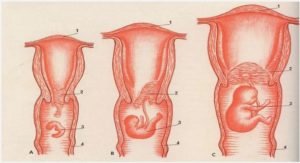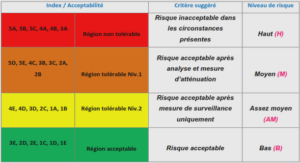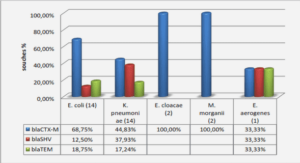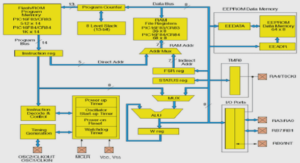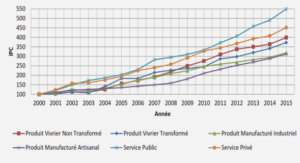Predictor risk factors for ipsilateral invasive recurrence within the whole population
Ductal carcinoma in situ (DCIS)
Ductal carcinoma in situ (DCIS) is a nonlethal pre malignant disease of the breast composed by a heterogeneous group of lesions. Since the introduction of screening mammography in the 1980s, detection of DCIS drastically increased and now represents nearly 20% of all newly diagnosed breast malignancies detected by mammography 1, 2, 3. The purpose of treating DCIS is the local control of the disease, to prevent potential occurrence of an invasive breast cancer, as well as to maximize breast conservation and to maintain an acceptable cosmetic result. The natural history of DCIS remains unknown and some DCIS may turn into an invasive breast cancer. There is currently no information to accurately identify women with a greater risk for subsequent disease recurrence which should be treated or followed more aggressively.
Some factors, such as the tumor and patient’s characteristics, biomarkers, and surgical margin status after breast conserving surgery (BCS) were found to be associated with a higher and or a lower risk of local invasive recurrence (LIR) 1, 4, 5. Within the past 20 years, randomized clinical trials have established that breast conserving surgery in addition to radiotherapy (BCT) may decrease the risk for a local recurrence 6, 7. It is therefore the gold standard for DCIS treatment. Yet, this treatment appears not suitable for all patients and offers no benefit to some. Discovering which specific features (from patient or from the original tumor) are predictors and increase the risk for LIR is a priority for DCIS treatment. The understanding of such factors, proven to be predictors and leading to a higher risk for LIR, could help health care providers to choose a more appropriate and tailored treatment for patients undergoing DCIS.
Description of tumor and patient’s features analyzed:
During the primary part of the study, evaluation of each patient and tumor characteristics were made to estimate the risk for LIR following DCIS. Sub group analysis was done only on patients undergoing BCT or BCS treatment to evaluate survival without LIR and the predictive risk factors for LIR. The patient characteristics analyzed were age, menopausal status and biomarkers. Patient age was defined as above or below 40 years old, menopausal status was whether patient was in menopause at the date of CCIS diagnosis or not. The biomarkers evaluated were the expression of estrogen receptors (positive versus negative), progesterone receptors (positive versus negative) and epidermal growth factor 2 (HER2) (positive versus negative).
For each tumor characteristic, discrimination was made on nuclear grade (high versus intermediate and low), tumor size (≤20 millimeters (mm) or > 20 mm), comedonecrosis (positive or negative), focality (multifocal / multicentric versus unifocal), mode of detection (screening mammography or none), treatment received (lumpectomy alone, BCS with radiotherapy, mastectomy) and margin status. Even though there were no standardized definitions of a free margin, it was considered positive if ≤ 1 mm or involved and negative if > 1 mm or free of tumor. Regarding the lack of definition for tumor size, agreement was made that tumors measuring ≤ 20 mm were considered small.
Margin index:
Evaluation on the risk to find a residual tumor after surgery and calculation of the margin index showed a mean tumor size for the entire population of 22mm with a mean closest margin of 3.22 mm. This resulted in a calculation of a mean margin index value of 43.37. Univariate analysis indicated that presence of comedonecrosis, large tumor size (>20mm), 17 presence of micro invasive ductal carcinoma and treatment by radical mastectomy (performed during second surgical procedure) were predictor risk factors for residual tumor on re-excision. Meanwhile, the multivariate analysis highlighted only the large tumor size (>20mm), the presence of comedonecrosis and the mastectomy to be predictor risk factors for finding residual tumors after the first surgical procedure.
For comedonecrosis, large tumor size and mastectomy results were OR= 1.99; CI 95% [1.08-3.63] p=0.026; OR= 2.37; CI 95% [ 1.42-3.93] p= 0.001; 0R= 4.88; CI 95% [2.89-8.24] p<0.00001, respectively. Within the sub group population undergoing BCT or BCS treatment, the mean closest margin was 3.82mm, mean tumor size was 15.6 mm which resulted in a calculation of a mean margin index value of 52.5. Within this same sub group population, a multivariate analysis found the presence of comedonecrosis and a larger tumor size > 20mm to be significant risk factors for finding residual tumors. Presence of comedonecrosis multiplies the risk of residual tumors by 2.06, and large tumor size (>20mm) multiplies the risk of residual tumors by 2.66. For comedonecrosis and large tumor size outcomes were OR 2.06 CI95[0.9-4.2] p=0.055; OR 2.66 CI 95 [1.4- 5.04] p= 0.003 respectively.
|
Table des matières
INTRODUCTION
PATIENTS AND METHOD
RESULTS
1. Population and tumor characteristics description
2. Median of follow up, overall survival
3. Predictor risk factors for ipsilateral invasive recurrence within the whole population
4. Predictor risk factors for ipsilateral invasive recurrence within sub group population with BCT and BCS treatment
5. Margin index
DISCUSSION AND CONCLUSION
REFERENCES
![]() Télécharger le rapport complet
Télécharger le rapport complet

